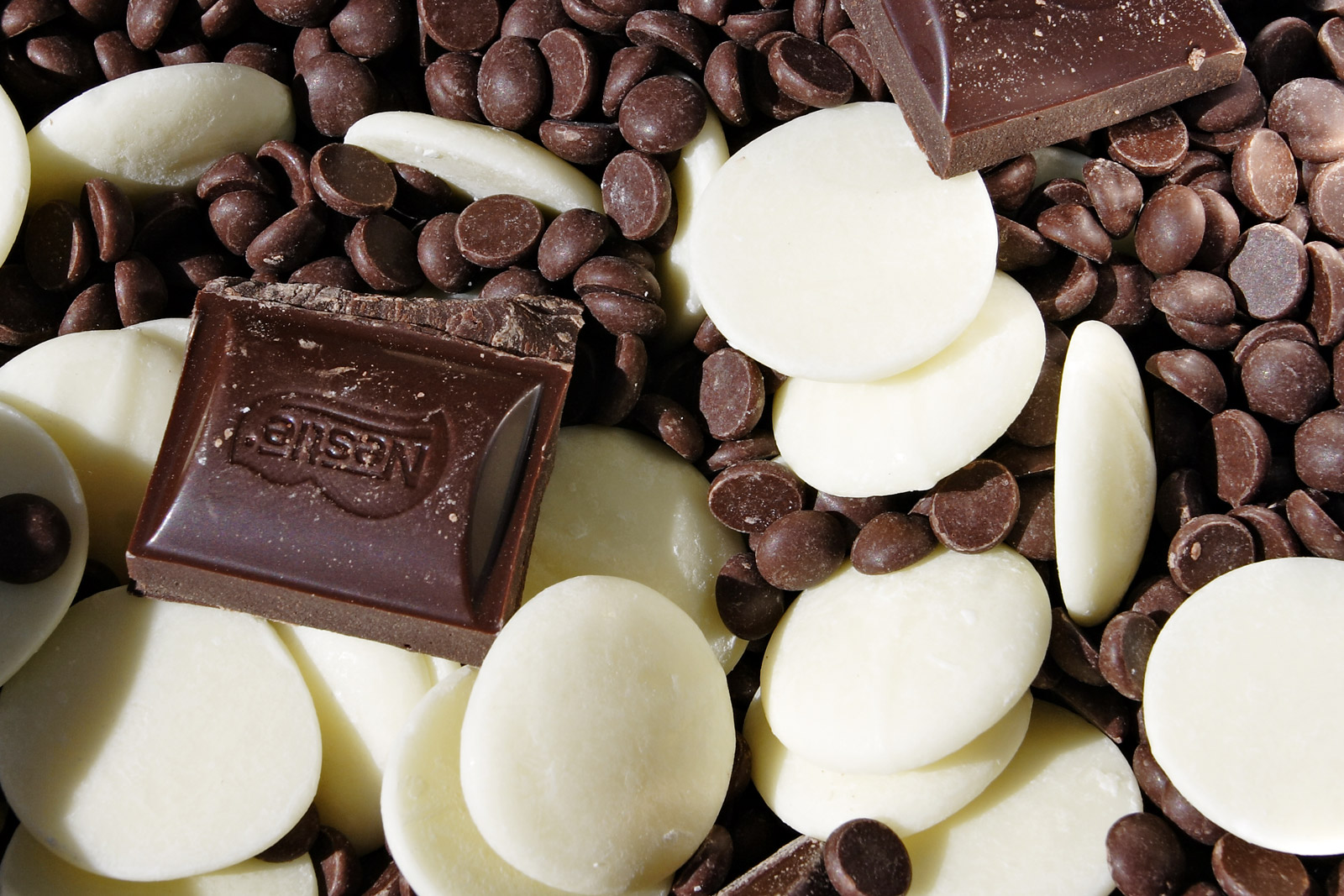Tips on Chocolate

I got this great book from the library called, "The Clever Cook's Kitchen Handbook." I have decided it's one for my wish list. I keep seeing things on here I want to share. It seems like every page has some great hint on it I've never heard before. It also has over 900 recipes. But since the title of this blog if "Chocolate and Other Food Groups" it seems only right to share a few hints on working with this most basic of all food groups.
1. So what is the difference between semisweet and bittersweet chocolate? Not much. Different companies will market theirs as semisweet, and yet it will taste more bitter than one called bittersweet. The real difference is the the amount of sugar each contains. Semisweet, bittersweet, or dark, it all has lots of intense cocoa flavor with no milk added.
2. What's the best way to melt chocolate? I like the double boiler methods for large amounts and the microwave for small amounts. To use a double boiler, you put a small amount of water in the bottom of a double boiler and put your chocolate in the pan on top. I actually got the top half of my double boiler at the thrift store. It fits right onto another pan I already had. If you don't have a double boiler, you can use a heatproof or stainless steel bowl into a saucepan of simmering water. Whatever you do, make sure the water doesn't get into the chocolate.
If that sounds risky, you can also use the microwave. Chop your chocolate (or use chocolate chips) into small pieces and put them in a microwave safe bowl. Heat on medium power, starting with 30 seconds at a time. Stir after every 30 seconds. It takes about 1 minute per 2 ounces of chocolate to melt, but it will depend on your microwave. As soon as it gets liquidy and almost all of the chocolate has melted, remove it from the microwave and stir until all the chocolate has melted and it becomes nice and smooth.
3. What if I did get water in my chocolate? Just a little water will turn your nice, liquid, smooth chocolate into a stiff hard mess that no one will want to eat. But don't panic. Add 1 1/2 Tb. shortening or oil to the mixture for every 4 ounces of chocolate. (That would make 4 1/2 Tb. for a whole bag of chocolate chips.) Then reheat in the microwave. Again, check every 30 seconds and stir. Soon it will be nice and smooth again.
4. What is that white stuff that gets on my chocolate after it's been in the cupboard for a long time? Should I throw it out? That white stuff is called bloom, and although it looks ugly, it does not affect the taste of the chocolate or whether you can use it. Save that chocolate for melting or go ahead and stick it in cookies. Once it's heated it will lose the white stuff.
5. Oops! I burned my chocolate. What do I do? You have 2 choices. Start over is the best one. But if you don't have enough chocolate to start over, you can try this trick. Dissolve 1 tsp. cocoa powder and 1 tsp. sugar in 1/4 c. hot water. Stir that into 4 ounces burnt chocolate. Adjust amounts according to how much chocolate you have - one bag of chocolate chips is 12 ounces, so triple the amounts above. Stir until blended.
6. How do I replace chocolate with cocoa powder? Use 3 Tb. cocoa powder for every 1 ounce chocolate, plus add 1 Tb. butter, shortening, or vegetable oil.
Hope these tricks are useful! Now I'm off to see what kind of chocolate I have in the house. I think there are some Mint 3 Musketeers left in my room.

Comments
http://smittenkitchen.com/2008/07/chocolate-sorbet/
But be warned, you will be totally hooked on it. I've made two batches in two weeks! Enjoy!